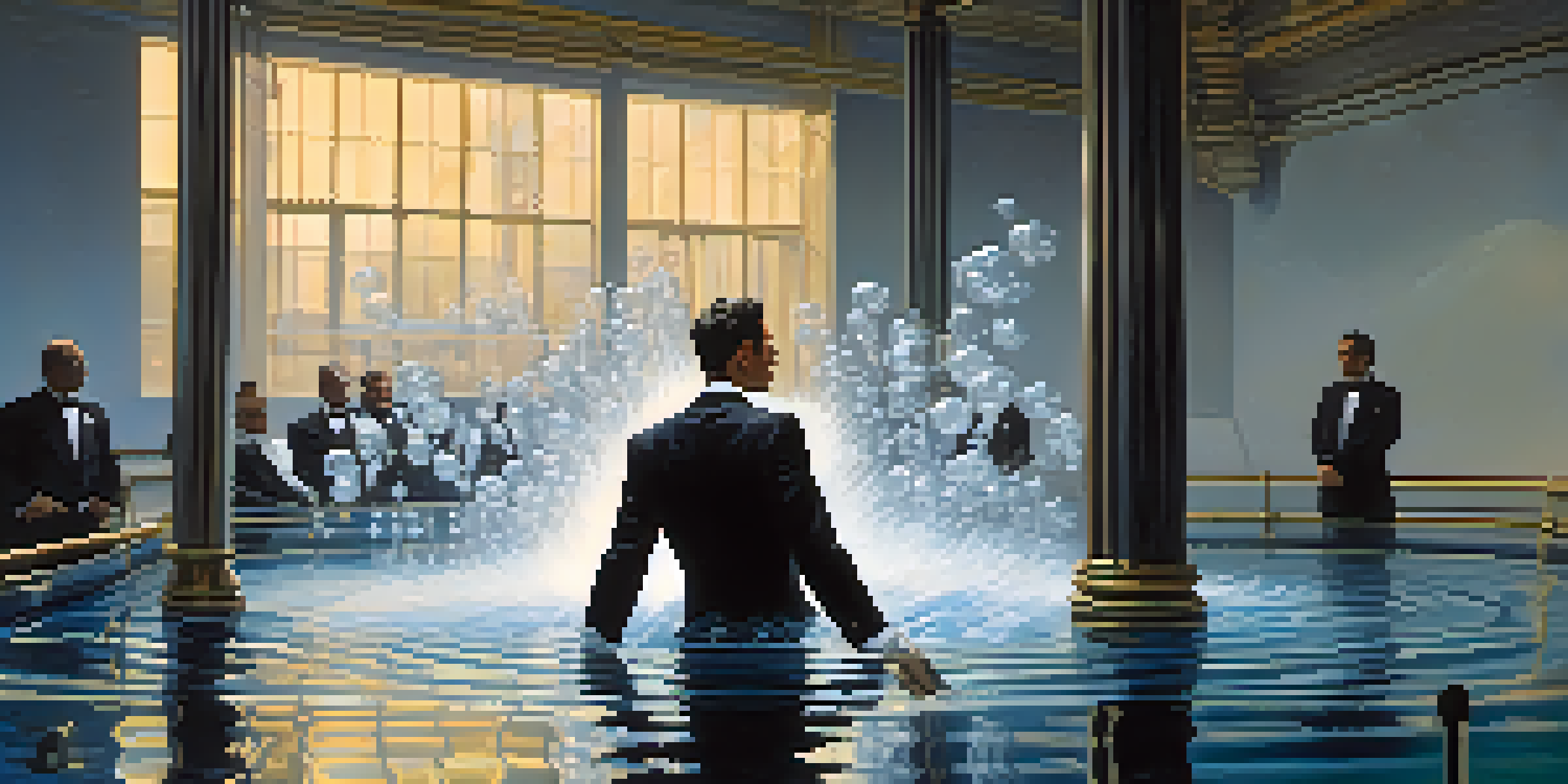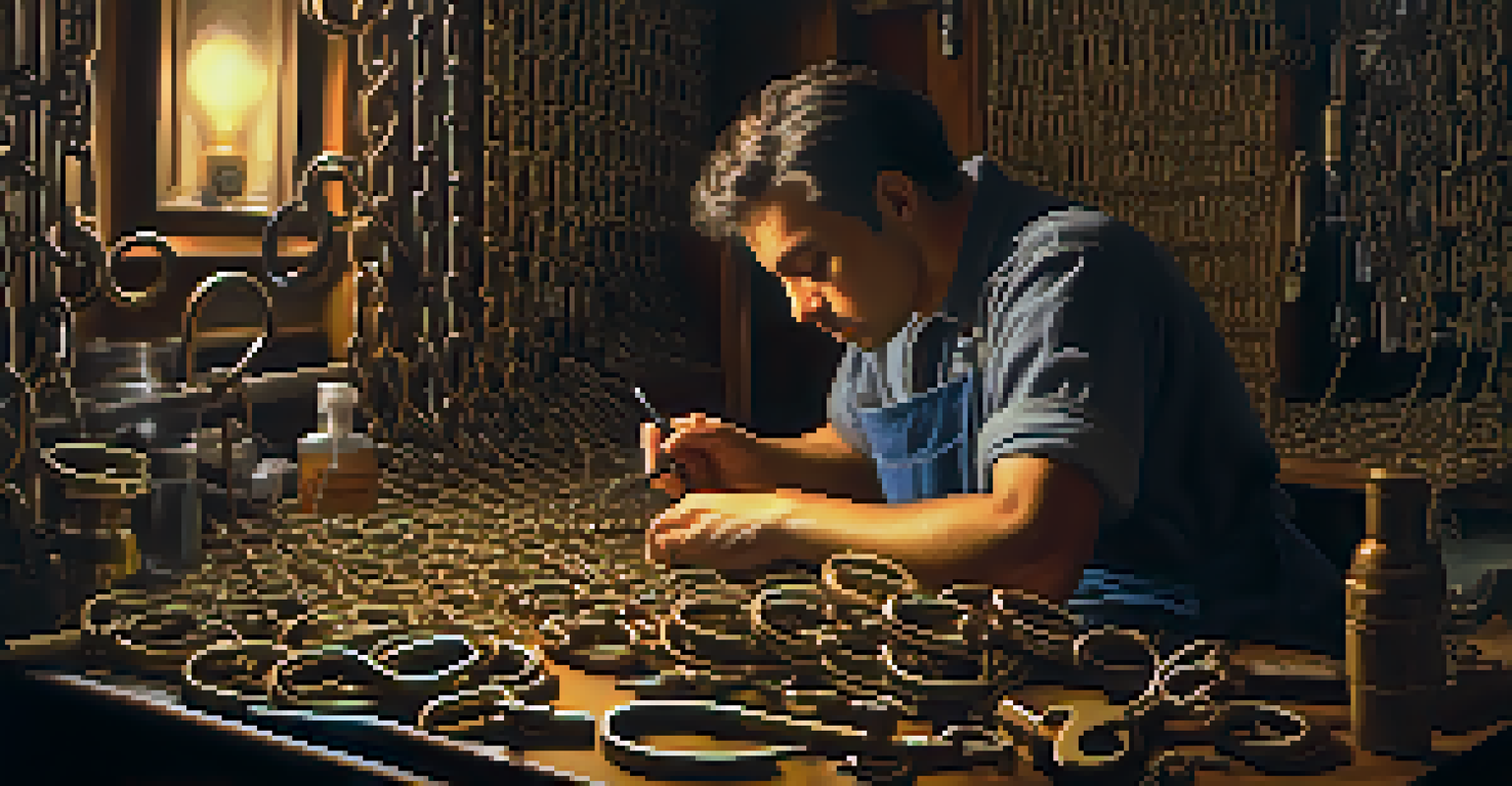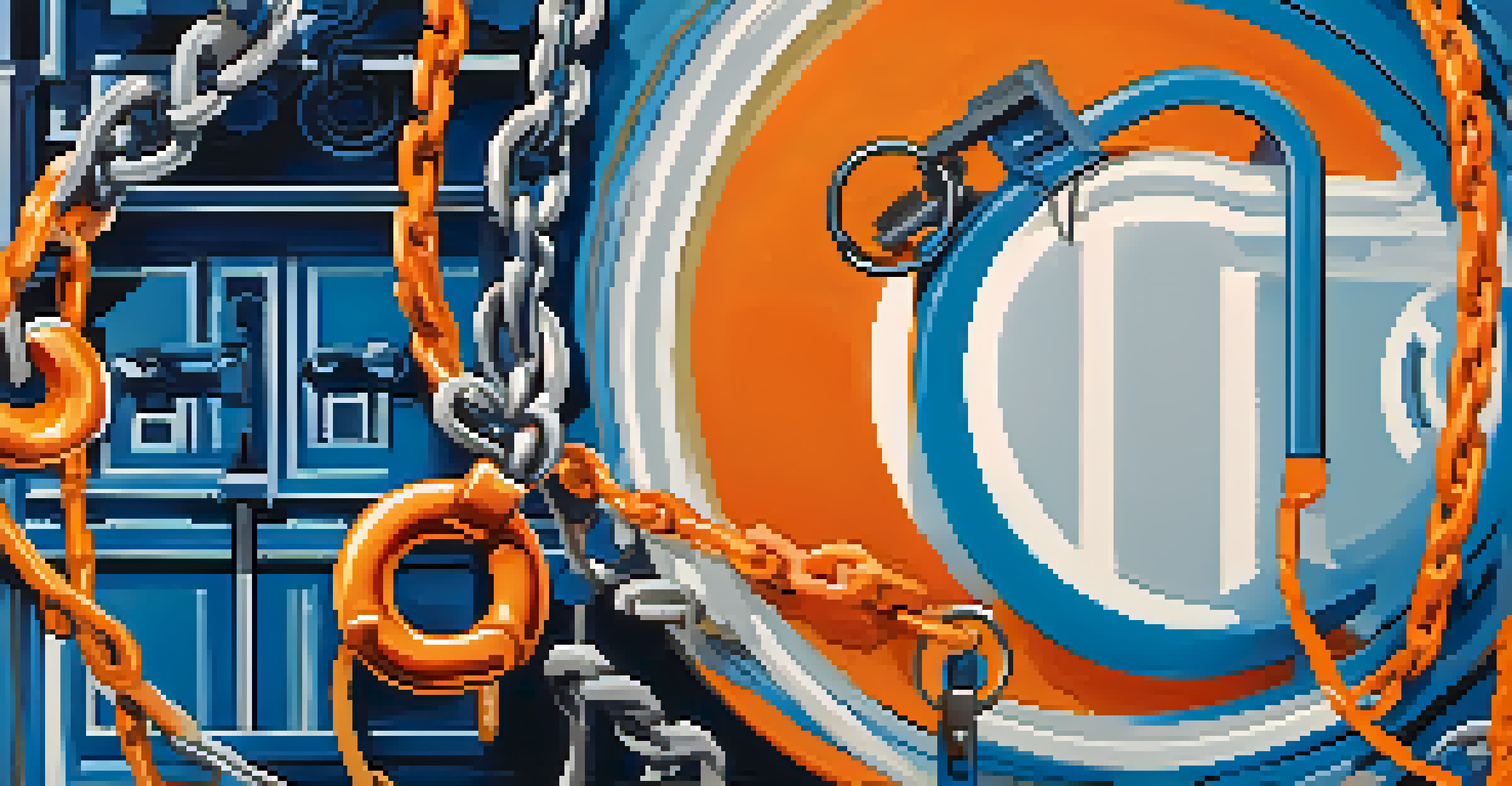The Art of Escape: Techniques Used by Escape Artists

History of Escape Artists: A Glimpse into Their Origins
The world of escape artists has a rich history, dating back to the early 19th century. Famous figures like Houdini popularized the craft, captivating audiences with their daring feats. These artists often used their skills to challenge the limits of human ability and to entertain those who craved thrilling performances.
The most beautiful thing in the world is freedom of thought and freedom of action.
Escape artistry combines elements of magic, illusion, and physical prowess. It’s not just about getting out of handcuffs or locked containers; it’s a blend of psychology, showmanship, and technique. Each performance tells a story, drawing the audience into the suspense of whether the escape will succeed.
Today, escape artists continue to honor this legacy while incorporating modern techniques and technology. They push boundaries further than ever, using innovative methods that keep audiences on the edge of their seats.
Mental Preparation: The Key to Successful Escapes
Mental fortitude is just as crucial as physical skills for escape artists. They often visualize their escape in detail, preparing for every possible scenario. This mental rehearsal allows them to remain calm and focused when the pressure is on, ensuring they execute their plan flawlessly.

In many cases, escape artists face time constraints, adding to the intensity of the performance. A strong mental game helps them think quickly and adapt if things don't go as planned. This ability to stay composed can be the difference between a successful escape and a mishap.
Escape Artistry's Rich History
Escape artistry has evolved significantly since the 19th century, blending magic and physical prowess to captivate audiences.
Moreover, some escape artists use breathing techniques to manage their nerves. Deep, controlled breaths can help to lower heart rates and center their thoughts, making it easier to concentrate on the task at hand.
Physical Skills: Building Strength and Agility
Physical conditioning is vital for escape artists, as their performances often require impressive strength and agility. Many escape artists engage in rigorous training regimes, focusing on flexibility, core strength, and endurance. This foundation allows them to maneuver in tight spaces and execute complex escapes.
The audience is a part of the act; they should be in the moment with you.
For instance, training in yoga can enhance flexibility, while weight training can build the muscle needed to free themselves from restraints. The combination of these physical skills creates a versatile artist capable of tackling various escape challenges.
Additionally, some escape artists incorporate martial arts training to improve their reflexes and spatial awareness. This not only enhances their performance but also adds an element of unpredictability that keeps audiences guessing.
Props and Equipment: Tools of the Trade
The props used in escape artistry are as diverse as the artists themselves. From handcuffs to water tanks, each piece of equipment is chosen for its ability to create a captivating challenge. The cleverness in selecting these props often lies in their ability to instill fear and excitement among the audience.
Escape artists frequently customize their equipment to suit their specific performances. For example, they might modify locks or create unique containers that enhance the difficulty of their escapes. This ingenuity not only showcases their creativity but also their technical skills.
Mental Prep is Key for Success
Mental fortitude and visualization techniques are essential for escape artists to remain calm and adapt under pressure.
Moreover, some artists use gadgets that aid in their escape, like hidden tools or devices that help them unlock restraints. This blend of innovation and craftsmanship adds an exciting layer to their performances.
Illusion and Misdirection: The Art of Deception
Illusion plays a crucial role in the world of escape artistry. Artists often use misdirection to distract the audience from their true actions, creating a sense of wonder. This technique can involve theatrical gestures, dramatic storytelling, or even visual tricks that draw attention away from the escape process.
For instance, while a performer may seem to struggle with their restraints, they might secretly be working on a hidden mechanism to free themselves. This element of surprise keeps the audience engaged and invested in the performance.
Mastering misdirection takes practice and an understanding of human psychology. Escape artists study how audiences react and use that knowledge to create the most impactful illusions during their acts.
Safety Measures: Knowing the Risks
Despite the thrilling nature of their performances, safety is paramount for escape artists. They are acutely aware of the risks involved and take extensive precautions to ensure their well-being. This includes thorough rehearsals and safety checks of all equipment before each performance.
Many escape artists have a safety team on standby, ready to assist in case of an emergency. This behind-the-scenes support allows them to take calculated risks while minimizing potential dangers.
Innovations Shape the Future
Modern escape artists are integrating technology and social media, creating new forms of entertainment that engage global audiences.
Additionally, some artists use safety mechanisms, such as quick-release locks or protective gear, to safeguard against mishaps. This blend of daring and caution is what makes these performances both exhilarating and safe.
The Future of Escape Artistry: Innovations and Trends
As the world of entertainment evolves, so does escape artistry. Modern escape artists are integrating technology into their performances, using digital tools and social media to enhance their acts. This infusion of tech not only broadens their creative horizons but also connects them with a global audience.
For instance, some artists now live-stream their escapes, allowing fans to witness their feats in real-time. This interaction adds a new dimension to their performances and builds a community around their craft.

Moreover, new forms of escape artistry are emerging, such as virtual reality experiences. These innovations keep the art fresh and relevant, ensuring that escape artistry remains a captivating form of entertainment for generations to come.